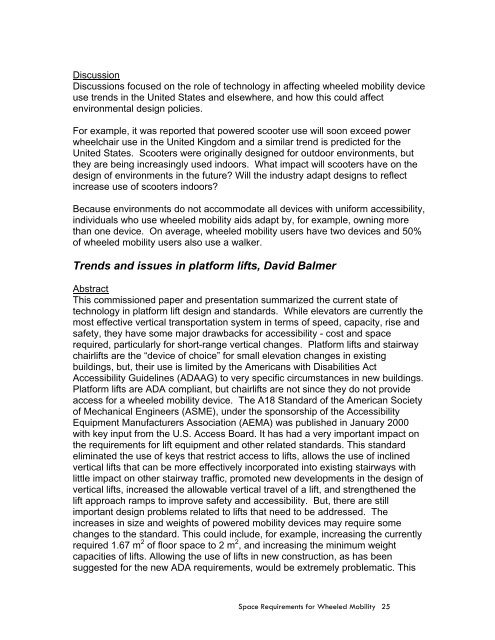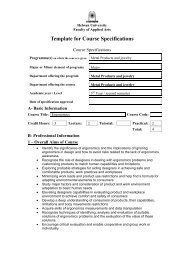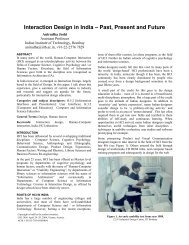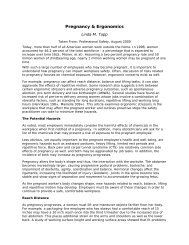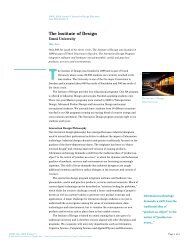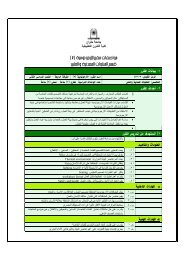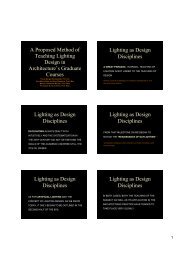Space Requirements for Wheeled Mobility - University at Buffalo ...
Space Requirements for Wheeled Mobility - University at Buffalo ...
Space Requirements for Wheeled Mobility - University at Buffalo ...
- No tags were found...
You also want an ePaper? Increase the reach of your titles
YUMPU automatically turns print PDFs into web optimized ePapers that Google loves.
DiscussionDiscussions focused on the role of technology in affecting wheeled mobility deviceuse trends in the United St<strong>at</strong>es and elsewhere, and how this could affectenvironmental design policies.For example, it was reported th<strong>at</strong> powered scooter use will soon exceed powerwheelchair use in the United Kingdom and a similar trend is predicted <strong>for</strong> theUnited St<strong>at</strong>es. Scooters were originally designed <strong>for</strong> outdoor environments, butthey are being increasingly used indoors. Wh<strong>at</strong> impact will scooters have on thedesign of environments in the future? Will the industry adapt designs to reflectincrease use of scooters indoors?Because environments do not accommod<strong>at</strong>e all devices with uni<strong>for</strong>m accessibility,individuals who use wheeled mobility aids adapt by, <strong>for</strong> example, owning morethan one device. On average, wheeled mobility users have two devices and 50%of wheeled mobility users also use a walker.Trends and issues in pl<strong>at</strong><strong>for</strong>m lifts, David BalmerAbstractThis commissioned paper and present<strong>at</strong>ion summarized the current st<strong>at</strong>e oftechnology in pl<strong>at</strong><strong>for</strong>m lift design and standards. While elev<strong>at</strong>ors are currently themost effective vertical transport<strong>at</strong>ion system in terms of speed, capacity, rise andsafety, they have some major drawbacks <strong>for</strong> accessibility - cost and spacerequired, particularly <strong>for</strong> short-range vertical changes. Pl<strong>at</strong><strong>for</strong>m lifts and stairwaychairlifts are the “device of choice” <strong>for</strong> small elev<strong>at</strong>ion changes in existingbuildings, but, their use is limited by the Americans with Disabilities ActAccessibility Guidelines (ADAAG) to very specific circumstances in new buildings.Pl<strong>at</strong><strong>for</strong>m lifts are ADA compliant, but chairlifts are not since they do not provideaccess <strong>for</strong> a wheeled mobility device. The A18 Standard of the American Societyof Mechanical Engineers (ASME), under the sponsorship of the AccessibilityEquipment Manufacturers Associ<strong>at</strong>ion (AEMA) was published in January 2000with key input from the U.S. Access Board. It has had a very important impact onthe requirements <strong>for</strong> lift equipment and other rel<strong>at</strong>ed standards. This standardelimin<strong>at</strong>ed the use of keys th<strong>at</strong> restrict access to lifts, allows the use of inclinedvertical lifts th<strong>at</strong> can be more effectively incorpor<strong>at</strong>ed into existing stairways withlittle impact on other stairway traffic, promoted new developments in the design ofvertical lifts, increased the allowable vertical travel of a lift, and strengthened thelift approach ramps to improve safety and accessibility. But, there are stillimportant design problems rel<strong>at</strong>ed to lifts th<strong>at</strong> need to be addressed. Theincreases in size and weights of powered mobility devices may require somechanges to the standard. This could include, <strong>for</strong> example, increasing the currentlyrequired 1.67 m 2 of floor space to 2 m 2 , and increasing the minimum weightcapacities of lifts. Allowing the use of lifts in new construction, as has beensuggested <strong>for</strong> the new ADA requirements, would be extremely problem<strong>at</strong>ic. This<strong>Space</strong> <strong>Requirements</strong> <strong>for</strong> <strong>Wheeled</strong> <strong>Mobility</strong> 25


